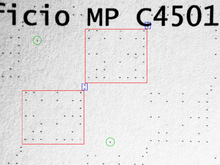
In computing, a printer is a peripheral machine which makes a durable representation of graphics or text, usually on paper. While most output is human-readable, bar code printers are an example of an expanded use for printers. Different types of printers include 3D printers, inkjet printers, laser printers, and thermal printers.

PostScript is a page description language and dynamically typed, stack-based programming language. It is most commonly used in the electronic publishing and desktop publishing realm, but as a Turing complete programming language, it can be used for many other purposes as well. PostScript was created at Adobe Systems by John Warnock, Charles Geschke, Doug Brotz, Ed Taft and Bill Paxton from 1982 to 1984. The most recent version, PostScript 3, was released in 1997.

Laser printing is an electrostatic digital printing process. It produces high-quality text and graphics by repeatedly passing a laser beam back and forth over a negatively charged cylinder called a "drum" to define a differentially charged image. The drum then selectively collects electrically charged powdered ink (toner), and transfers the image to paper, which is then heated to permanently fuse the text, imagery, or both, to the paper. As with digital photocopiers, laser printers employ a xerographic printing process. Laser printing differs from traditional xerography as implemented in analog photocopiers in that in the latter, the image is formed by reflecting light off an existing document onto the exposed drum.

Dot matrix printing, sometimes called impact matrix printing, is a computer printing process in which ink is applied to a surface using a relatively low-resolution dot matrix for layout. Dot matrix printers are a type of impact printer that prints using a fixed number of pins or wires and typically use a print head that moves back and forth or in an up-and-down motion on the page and prints by impact, striking an ink-soaked cloth ribbon against the paper. They were also known as serial dot matrix printers. Unlike typewriters or line printers that use a similar print mechanism, a dot matrix printer can print arbitrary patterns and not just specific characters.

Daisy wheel printing is an impact printing technology invented in 1970 by Andrew Gabor at Diablo Data Systems. It uses interchangeable pre-formed type elements, each with typically 96 glyphs, to generate high-quality output comparable to premium typewriters such as the IBM Selectric, but two to three times faster. Daisy wheel printing was used in electronic typewriters, word processors and computers from 1972. The daisy wheel is so named because of its resemblance to the daisy flower.
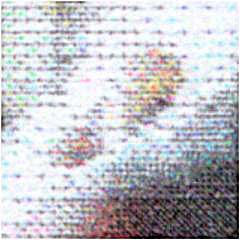
Dots per inch is a measure of spatial printing, video or image scanner dot density, in particular the number of individual dots that can be placed in a line within the span of 1 inch (2.54 cm). Similarly, dots per centimetre refers to the number of individual dots that can be placed within a line of 1 centimetre (0.394 in).
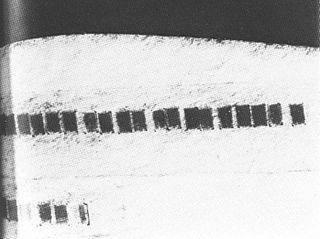
A microdot is text or an image substantially reduced in size to prevent detection by unintended recipients. Microdots are normally circular and around 1 millimetre (0.039 in) in diameter but can be made into different shapes and sizes and made from various materials such as polyester or metal. The name comes from microdots often having been about the size and shape of a typographical dot, such as a period or the tittle of a lowercase i or j. Microdots are, fundamentally, a steganographic approach to message protection.
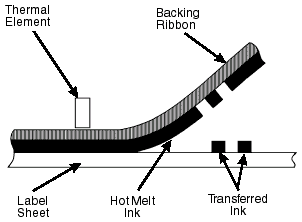
Thermal-transfer printing is a digital printing method in which material is applied to paper by melting a coating of ribbon so that it stays glued to the material on which the print is applied. It contrasts with direct thermal printing, where no ribbon is present in the process.

Toner is a powder mixture used in laser printers and photocopiers to form the text and images on paper, in general through a toner cartridge. Mostly granulated plastic, early mixtures added only carbon powder and iron oxide; now there are mixtures that contain polypropylene, fumed silica, and various minerals for triboelectrification. Toner using plant-derived plastic also exists as an alternative to petroleum plastic. Toner particles are melted by the heat of the fuser, and are thus bonded to the paper.

The EURion constellation is a pattern of symbols incorporated into a number of secure documents such as banknotes, checks, and ownership title certificates designs worldwide since about 1996. It is added to help imaging software detect the presence of such a document in a digital image. Such software can then block the user from reproducing banknotes to prevent counterfeiting using colour photocopiers.

Security printing is the field of the printing industry that deals with the printing of items such as banknotes, cheques, passports, tamper-evident labels, security tapes, product authentication, stock certificates, postage stamps and identity cards. The main goal of security printing is to prevent forgery, tampering, or counterfeiting. More recently many of the techniques used to protect these high-value documents have become more available to commercial printers, whether they are using the more traditional offset and flexographic presses or the newer digital platforms. Businesses are protecting their lesser-value documents such as transcripts, coupons and prescription pads by incorporating some of the features listed below to ensure that they cannot be forged or that alteration of the data cannot occur undetected.
Variable Data Intelligent Postscript Printware is an open language from Xerox that enables highest-performance output of variable-data PostScript documents. It is used by the FreeFlow VI Suite (VIPP) front end.

Microprinting is the production of recognizable patterns or characters in a printed medium at a scale that typically requires magnification to read with the naked eye. To the unaided eye, the text may appear as a solid line. Attempts to reproduce by methods of photocopy, image scanning, or pantograph typically translate as a dotted or solid line, unless the reproduction method can identify and recreate patterns to such scale. Microprint is predominantly used as an anti-counterfeiting technique, due to its inability to be easily reproduced by widespread digital methods.
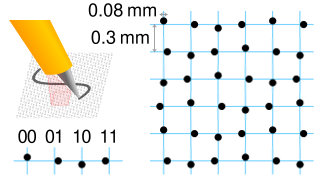
Digital paper, also known as interactive paper, is patterned paper used in conjunction with a digital pen to create handwritten digital documents. The printed dot pattern uniquely identifies the position coordinates on the paper. The digital pen uses this pattern to store handwriting and upload it to a computer.
In the distribution and logistics of many types of products, track and trace or tracking and tracing concerns a process of determining the current and past locations of a unique item or property. Mass serialization is the process that manufacturers go through to assign and mark each of their products with a unique identifier such as an Electronic Product Code (EPC) for track and trace purposes. The marking or "tagging" of products is usually completed within the manufacturing process through the use of various combinations of human readable or machine readable technologies such as DataMatrix barcodes or RFID.
DocuTech is the name given to a line of electronic production-publishing systems produced by Xerox Corporation. It allowed paper documents to be scanned, electronically edited, and then printed on demand. DocuTech systems were the last known to use the XNS protocol for networking.
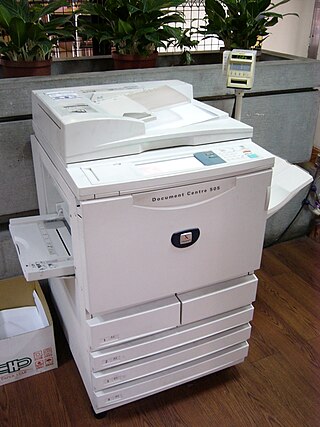
A photocopier is a machine that makes copies of documents and other visual images onto paper or plastic film quickly and cheaply. Most modern photocopiers use a technology called xerography, a dry process that uses electrostatic charges on a light-sensitive photoreceptor to first attract and then transfer toner particles onto paper in the form of an image. The toner is then fused onto the paper using heat, pressure, or a combination of both. Copiers can also use other technologies, such as inkjet, but xerography is standard for office copying.
The Electronic Frontier Foundation (EFF) is an international non-profit advocacy and legal organization based in the United States.
The Xerox 9700 was a high-end laser printer manufactured by Xerox Corporation beginning in 1977. Based on the Xerox 9200 copier, the 9700 printed at 300 dots-per-inch on cut-sheet paper at up to two pages per second (pps), one- or two-sided, that is simplex or duplex, landscape or portrait.

The Xerox 1200 Computer Printing System is a computer printer system that was developed by Xerox. It was the first commercial non-impact Xerographic printer used to create computer output. It is sometimes mistakenly referred to as a laser printer, but it did not in fact have a laser.




